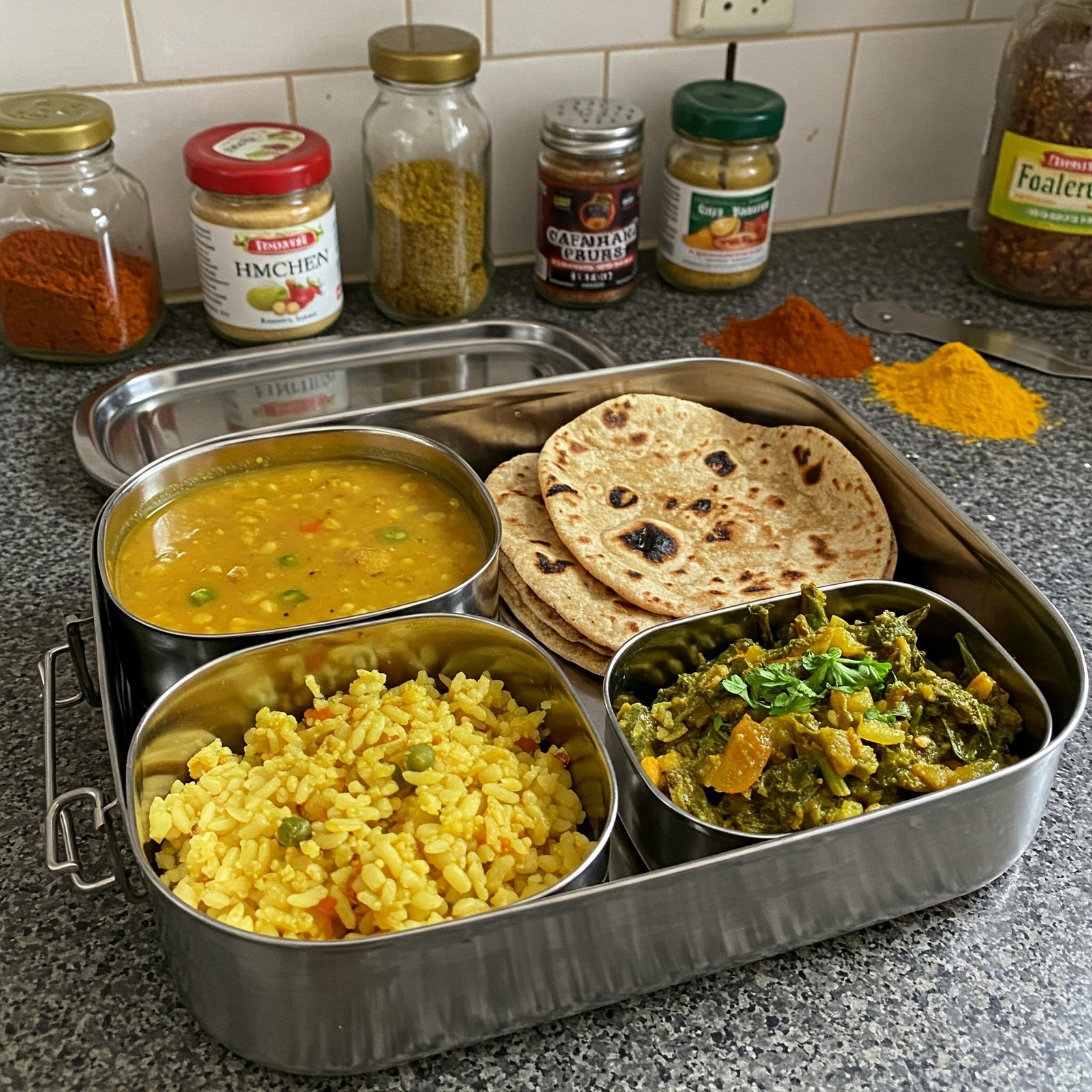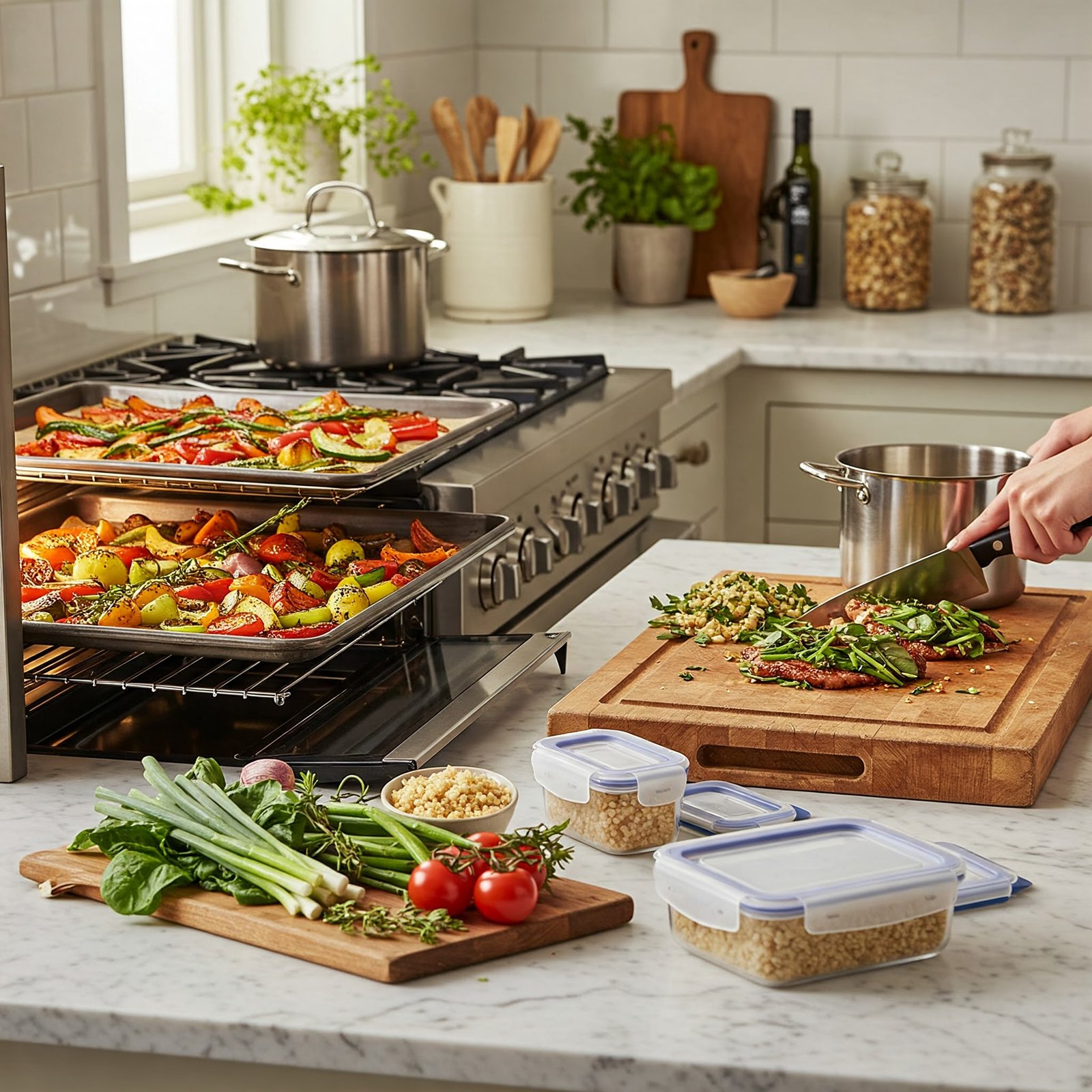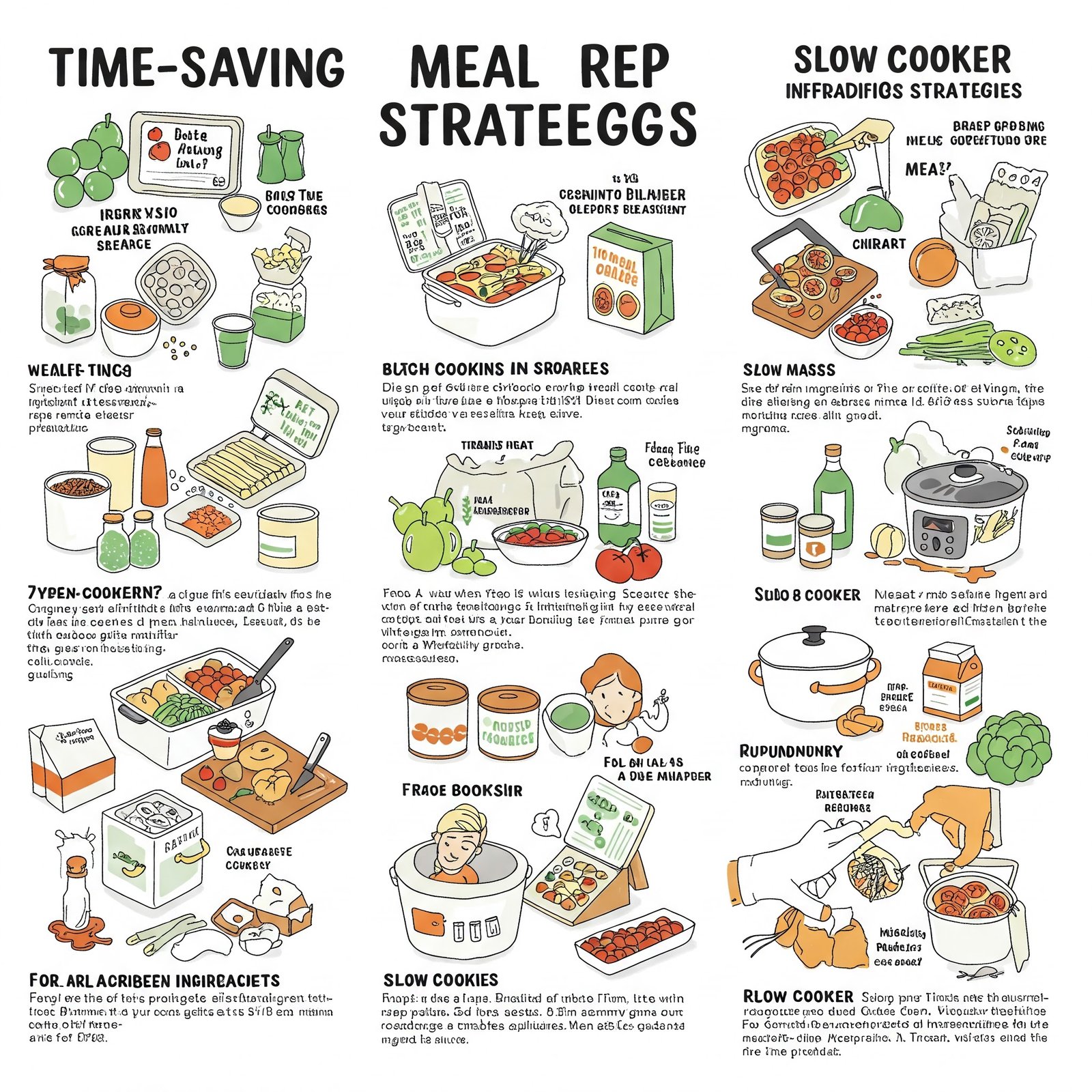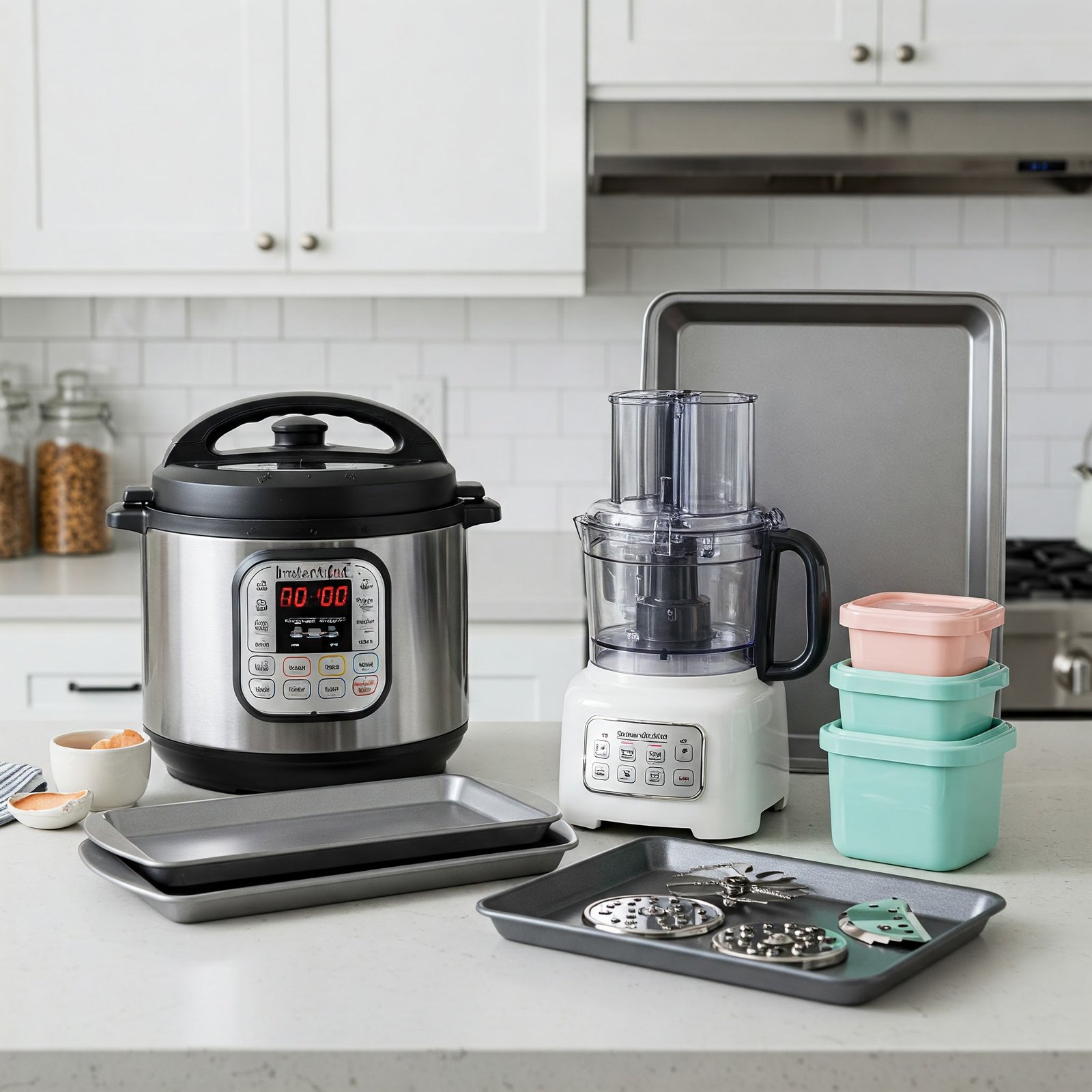It was a Wednesday at 8:30 PM when I stood in front of my open refrigerator, completely drained after a 10-hour workday, staring blankly at a wilting bag of spinach and some questionable leftovers. That night, I had a wake-up call. The endless cycle of skipped breakfasts, rushed app-ordered desk lunches, and late-night takeout wasn’t just hurting my budget—it was leaving me exhausted and unfulfilled. That’s when I discovered the power of meal prep for working women—a simple shift that transformed my energy levels, eating habits, and weekday sanity.
That breaking point led me on a journey to master the art of meal prepping—a skill that has genuinely transformed my work week. As a working woman with limited time and energy, I’ve spent years refining a system that works with my schedule, not against it. Today, I’m sharing the strategies that have helped me maintain a healthy diet while juggling deadlines, meetings, and a social life.
Why Meal Prep Matters Especially for Working Women
Before diving into the how-to, I want to acknowledge why meal prepping can be particularly valuable for working women. According to research, women still handle the majority of household food preparation in many homes, even when working full-time. Add to this the pressures of career advancement, possible childcare responsibilities, and the mental load of managing it all, and it’s no wonder that nutritious eating often falls by the wayside.
In my own experience, having prepared meals ready to go has:
- Reduced my daily decision fatigue (one less thing to think about!)
- Saved me at least $200 monthly on takeout and delivery
- Helped me maintain consistent energy levels throughout demanding workdays
- This gives me more control over my nutrition and portion sizes
- Created pockets of precious free time on weeknights
If you’ve tried meal prepping before and found it overwhelming, I completely understand. My early attempts involved complicated recipes that left my kitchen looking like a disaster zone and consumed entire Sundays. The tips I’m sharing today come from years of trial and error, specifically designed for realistic implementation alongside a busy career.
1. Setting Yourself Up for Meal Prep Success
1 – Start with a Streamlined Plan
My first attempts at meal prepping failed because I tried to prepare 21 different meals for the week. Now, I follow a much simpler approach:
I dedicate 2-3 hours on Sunday to prepare:
- Breakfasts for the entire workweek
- Lunches for Monday through Wednesday
- Dinner components that can be mixed and matched for 3-4 evenings
Then, I do a mini-prep session on Wednesday evening (just 30-45 minutes) to refresh lunches and dinner components for the remainder of the week. This split approach prevents food fatigue and ensures everything stays fresh.
My planning routine takes just 15 minutes:
- I check my calendar for the coming week (late meetings, lunch appointments, etc.)
- I inventory my fridge and pantry
- I select just 2-3 core recipes to build around
- I create a focused grocery list organized by store section
My tip: I keep a “meal prep template” rather than starting from scratch each week. This includes categories of foods to prepare rather than specific recipes: one protein, one grain, two vegetables, one snack option, and one sauce or dressing that can transform basic ingredients.
2 – The 2-Hour Sunday System (Office & WFH Friendly)
Indian Kitchen Shortcuts
-
Sabzi Prep: Pressure cook 3 veggies together (e.g., beans+gajar+aloo)
-
Dal Hack: Cook toor dal with 1 tsp oil to prevent spoilage
-
Rotis: Partially cook & freeze between butter paper

My Tiffin Formula:
| Day | Lunch | Breakfast |
|---|---|---|
| Mon | Jeera rice + rajma | Oats porridge |
| Tue | Dal khichdi | Poha |
| Wed | Methi paratha + dahi | Besan chilla |
(Pro Tip: Use glass compartment tiffins to prevent sogginess)
3 – Master Batch Cooking Techniques

The breakthrough in my meal prep routine came when I stopped thinking about preparing complete meals and started focusing on versatile components that could be mixed and matched throughout the week. Now I batch cook:
- Proteins: Roasted chicken breasts, hard-boiled eggs, baked tofu, or beans
- Grains: Brown rice, quinoa, farro, or prepped sweet potatoes
- Vegetables: Roasted vegetable medleys, chopped raw veggies, massaged kale
- Sauces/Dressings: Homemade vinaigrettes, tahini sauce, pesto, or hummus
This approach allows me to assemble different meals quickly rather than eating the same thing day after day. Monday might be a grain bowl with roasted vegetables and tahini sauce, while Tuesday could be a wrap with the same ingredients plus different seasonings.
My tip: I roast vegetables on two sheet pans simultaneously—one with faster-cooking items (zucchini, bell peppers) and one with longer-cooking options (sweet potatoes, Brussels sprouts). This maximizes oven efficiency.
2. Time-Saving Meal Prep Strategies

1. Embrace “Assembly” Breakfasts
Mornings are my most rushed time, so I focus on breakfasts that can be fully prepped ahead or assembled in under two minutes:
- Overnight oats: My Sunday ritual includes preparing five jars with oats, chia seeds, and milk. I keep toppings like berries, nut butter, and hemp seeds in separate containers for quick assembly.
- Egg muffins: I make a dozen veggie-packed egg muffins that reheat beautifully in the microwave for a protein-rich start.
- Smoothie freezer packs: I portion smoothie ingredients into silicone bags and freeze them. In the morning, I just dump the contents into the blender with liquid.
My tip: The best breakfast prep is the one you’ll actually eat. I discovered that while elegant breakfast bowls look amazing on Instagram, I rarely have time to enjoy them. Simple, portable options work better with my schedule.
2. Create “Mix and Match” Lunch Components
After too many sad desk salads, I’ve perfected the art of prepping lunch components that stay fresh and appetizing:
- Base greens: I wash and dry hearty greens like kale or romaine, storing them with a paper towel to absorb moisture.
- Protein add-ins: I prepare 2-3 protein options like chickpeas, tuna salad, or sliced chicken.
- Quick-grab nutritional boosters: Seeds, nuts, and crumbled cheese in small containers.
- Pre-cut vegetables: I slice vegetables like bell peppers, cucumbers, and carrots for both lunches and snacks.
- Cooked grains: A batch of quinoa or farro works in salads, soups, and grain bowls.
My personal tip: I store salad dressings separately in small leak-proof containers and dress my salad right before eating. This prevents the dreaded soggy salad syndrome that plagued my early meal-prepping days.
3. Simplify Dinner with Prepped Components
For dinner, I aim for “semi-homemade” rather than completely pre-cooked meals. This gives me the satisfaction of fresh cooking without starting from scratch after a long workday:
- Pre-chopped aromatics: Diced onions, minced garlic, and ginger stay fresh for days and eliminate the most time-consuming prep step.
- Partially prepped proteins: I marinate meat or tofu in portion-sized bags ready to cook.
- Washed and chopped vegetables: Having these ready reduces dinner prep by at least 15 minutes.
- Cooked grains and legumes: These form the base of quick grain bowls, stir-fries, or soups.
My tip: I prepare one “emergency” dinner option each week that can go straight from the freezer to the table. My favourites are homemade frozen burritos, individually portioned curry, and vegetable-packed pasta sauce that just needs boiling pasta.
3. Smart Shortcuts That Don’t Sacrifice Nutrition
1. Strategic Store-Bought Helpers
I used to think meal prepping meant making everything from scratch. Now I selectively use quality convenience items to save time:
- Rotisserie chicken: A weekly staple that I shred and portion for multiple uses
- Pre-cut vegetables: Worth the slight premium for time-intensive items like butternut squash
- Frozen grains: Microwaveable brown rice or quinoa packets for last-minute meals
- Canned beans: Drained, rinsed, and ready to use in countless dishes
- Pre-made dips: Good-quality hummus or tzatziki as both spreads and flavour enhancers
My tip: I’m selective about where I spend my prep time. I’ll make dressings from scratch (quick and much tastier) but buy pre-marinated proteins when on sale.
- Also Check Out – The 30-Minute Daily Cleaning Routine That Keeps My Home Spotless
2. Leverage Your Kitchen Equipment

Working smarter, not harder, has been key to maintaining my meal prep routine alongside a demanding job. These appliances have been game-changers:
- Instant Pot: I use it to cook perfect beans from dry, make shredded chicken, or prepare steel-cut oats overnight.
- Sheet pans: Nothing beats the simplicity of roasting a pan of vegetables while simultaneously preparing other components.
- Food processor: Quickly chops vegetables, prepares energy balls, or makes homemade hummus.
- Slow cooker: I set it up before work for a ready-to-eat dinner or to prep a large batch of protein for the week.
My tip: Sunday afternoon is my “power hour” when I run multiple appliances simultaneously—beans in the Instant Pot, vegetables roasting in the oven, and a vinaigrette blending in the food processor.
3. The Power of Strategic Freezing
The freezer is my secret weapon for extending my meal prep efforts:
- I cook double batches of soups, stews, and casseroles, freezing half for future weeks.
- Cooked grains freeze beautifully in portion-sized bags.
- Ripe bananas get sliced and frozen for instant smoothie additions.
- Fresh herbs are chopped and frozen in olive oil in ice cube trays.
- Grated ginger and pre-portioned curry paste stay ready for quick flavour boosts.
My tip: I keep a freezer inventory on my phone to prevent the “freezer abyss” where good prepped food goes to get forgotten. Each month, I declare a “freezer clean-out week”, where I use existing prepped items instead of making new ones.
4. Meal Prep for Different Workstyle Needs
Your meal prep approach should match your specific work demands. Here’s how I’ve adapted mine during different career phases:
| Workstyle | Meal Prep Strategy | Recommended Foods | Pro Tips |
|---|---|---|---|
| Office Days | Leak-proof containers | Grain bowls, wraps, pasta salads | Use ice packs for perishables |
| Room-temp friendly options | Hard-boiled eggs, nuts, whole fruits | Pack a small dark chocolate square | |
| Microwave-free choices | Sushi rolls, sandwich skewers | Layer dressings separately | |
| WFH Days | Pre-portioned snacks | Cut veggies, hummus cups, yogurt parfaits | Keep snacks out of sight |
| Quick-assembly meals | Pre-cooked proteins, washed greens | Use same pan for cooking/cleaning | |
| Scheduled kitchen reset | Overnight oats, smoothie packs | Clean while coffee brews | |
| Travel/Meeting Days | No-mess portable meals | Burritos, energy balls, cheese cubes | Wrap in parchment paper first |
| Non-perishable backups | Trail mix, protein bars, jerky | Stash extras in car/bag | |
| Hydration focus | Electrolyte packets, coconut water | Set phone re |
5. Real-Life Meal Prep Menu (Sunday Session)
After years of experimentation, I’ve developed several “formulas” for successful prep. Here’s my current favourite for a manageable Sunday session:

| Category | Prep Item | Usage | Storage Tips |
|---|---|---|---|
| Breakfast | Egg muffins (spinach/feta/pepper) | Mon/Wed/Fri | Freeze extras for future weeks |
| Overnight oats (almond butter/berries) | Tue/Thu | Store in mason jars for grab-and-go | |
| Lunch Components | Lemon herb chicken breasts | Main protein | Portion in 4oz servings |
| Marinated chickpeas | Vegan protein | Keep dressing separate until serving | |
| Cooked farro | Grain base | Lasts 5 days refrigerated | |
| Roasted broccoli + raw veggies | Fiber boost | Store veggies dry in glass containers | |
| Lemon tahini dressing | Flavor booster | Separate container, lasts 2 weeks | |
| Dinner Prep | Stir-fry veg + marinated tofu | 10-minute meal | Keep tofu in marinade until cooking |
| Vegetable lasagna (partial prep) | Bake-night ease | Assemble but don’t bake until needed | |
| Taco ingredients (pre-chopped) | Flexible meal | Store components separately | |
| Snacks | Veggies + hummus | Crunch fix | Keep hummus in small containers |
| Portioned Greek yogurt | Protein boost | Add honey just before eating | |
| Date energy balls | Sweet treat | Freeze half for later |
Making Meal Prep a Sustainable Habit
The key to long-term meal prep success has been making it a natural part of my routine rather than an overwhelming weekend project:
- I schedule it on my calendar like any other important appointment
- I create a pleasant environment with a clean kitchen, good music, and sometimes a glass of wine
- I batch similar tasks rather than completing one recipe at a time
- I involve others when possible, turning prep into social time with my partner or a friend
- I track my savings to stay motivated (both financial and time savings)
What started as a desperate attempt to eat better during busy workweeks has evolved into a cornerstone habit that enhances multiple aspects of my life. Beyond the obvious health benefits, meal prepping has given me back precious evening hours, reduced my stress levels, and even improved my cooking skills.
Remember that meal prep should serve you and your unique needs—not create another source of pressure in your already-demanding life. Start small, find your rhythm, and adjust as needed. Your future hungry, tired self will thank you!
FAQs
How much time should I realistically set aside for meal prepping?
In my experience, a comprehensive prep session takes 2-3 hours once you've established a routine. However, I recommend starting with just one hour, focusing on your most challenging meal of the day. As you build efficiency, you can gradually expand your prep. I find that breaking it into a main session (2 hours Sunday) plus a mini-refresh (30 minutes mid-week) works better than one marathon session.
How do I prevent prepped food from spoiling before I eat it?
This was my biggest challenge initially! I've found that proper storage is crucial—investing in airtight containers, using paper towels to absorb excess moisture from greens, and storing components separately until ready to eat. Most prepped foods stay fresh for 3-4 days, which is why I do a mid-week mini-prep. For longer storage, I immediately freeze portions I know I won't eat within three days.
What are the best meals to prep if I have limited cooking skills?
Start with assembly-based meals rather than complex recipes. Sheet pan-roasted vegetables, basic proteins like rotisserie chicken or canned beans, cooked grains, and simple dressings can be combined in endless ways without requiring advanced cooking skills. As your confidence grows, gradually add more prepared elements. My beginner-friendly suggestion is grain bowls—they're forgiving, versatile, and don't require precise techniques.
Has meal prepping transformed your work week? What are your biggest meal prep challenges? Share your experiences in the comments, and let’s build a community of support for busy women mastering the art of advance food preparation!


